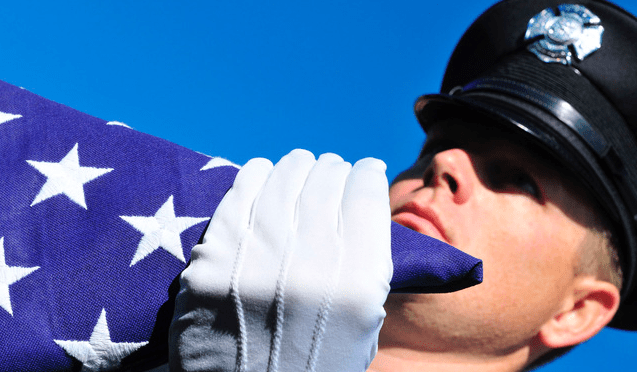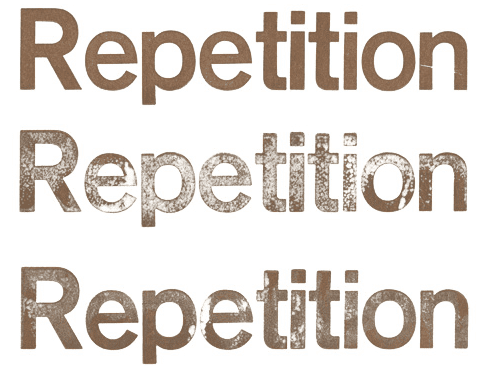 Albert Einstein is credited with saying: “Insanity is doing the same thing over and over again while expecting different results.” If you have spent time reading firefighter fatality reports, you might start to see the real-life manifestation of Einstein’s definition of insanity. In fact, I would go as far as to say we’ve got to the point where we are discovering very few new ways to kill firefighters. Rather, we’re taking all the ways we already know how to do it and we’re perfecting it by doing it over and over… and over… and over again. This is Einstein’s insanity personified. Here we will examine some potential explanation for this insanity.
Albert Einstein is credited with saying: “Insanity is doing the same thing over and over again while expecting different results.” If you have spent time reading firefighter fatality reports, you might start to see the real-life manifestation of Einstein’s definition of insanity. In fact, I would go as far as to say we’ve got to the point where we are discovering very few new ways to kill firefighters. Rather, we’re taking all the ways we already know how to do it and we’re perfecting it by doing it over and over… and over… and over again. This is Einstein’s insanity personified. Here we will examine some potential explanation for this insanity.
Honor the Fallen
 Before I start into the explanations of how situational awareness can be impacted through insane behaviors, I want to make sure all readers know I am not criticizing those who have died in the act of firefighting. Rather, and much to the contrary, I am going to attempt to explain the neuroscience of decision-making and how situational awareness can be eroded by certain factors. Neither the fallen, nor those who worked beside them or supervised them during the event lost their situational awareness on purpose (emphasis added).
Before I start into the explanations of how situational awareness can be impacted through insane behaviors, I want to make sure all readers know I am not criticizing those who have died in the act of firefighting. Rather, and much to the contrary, I am going to attempt to explain the neuroscience of decision-making and how situational awareness can be eroded by certain factors. Neither the fallen, nor those who worked beside them or supervised them during the event lost their situational awareness on purpose (emphasis added).
This is Part 1 of a series of articles I dedicate to the fallen by helping you avoid the trap of insanity.
Trained to Fail
 I have invested a considerable amount of time and effort investigating the neurological basis of learning, especially learning under stress, and more specifically, how we train first responders to fail. Of course, we’re not training first responders to fail on purpose. No self-respecting instructor would do that. But they do it… A LOT! And the evidence is present in the line-of-duty death evaluation reports…if you understand how the brain learns.
I have invested a considerable amount of time and effort investigating the neurological basis of learning, especially learning under stress, and more specifically, how we train first responders to fail. Of course, we’re not training first responders to fail on purpose. No self-respecting instructor would do that. But they do it… A LOT! And the evidence is present in the line-of-duty death evaluation reports…if you understand how the brain learns.
Unfortunately, instructional methodology classes (required for instructor certification) do not teach the neural foundation of learning. And this is a shame. Such lessons were never shared with me and for the better part of the 25 years I trained first responders to fail, simply because I didn’t know better.
This is a complex topic. In fact, it’s so complex that I used to teach it as part of the Situational Awareness curriculum but have since developed a completely separate class to train instructors on how training for failure occurs and how to fix it. Simply stated, any time we train responders we are helping to develop two types of memory: cognitive memory – the memory of information (the “what am I supposed to do?” knowledge); and, kinesthetic memory – the memory of muscle movement (the “how am I supposed to do it?” knowledge).
Remember to Repeat
 Repetition is key to learning. That’s been scientifically validated in many research studies. In fact, the less we rehearse, be it cognitive information or muscle movement, the greater the likelihood of making mistakes or failing to remember how to perform a task or failing to recall knowledge. I demonstrate this amply during the Training for Failure class when I have a student perform a novel task (first time task) and their performance is horribly slow and fraught with mistakes.
Repetition is key to learning. That’s been scientifically validated in many research studies. In fact, the less we rehearse, be it cognitive information or muscle movement, the greater the likelihood of making mistakes or failing to remember how to perform a task or failing to recall knowledge. I demonstrate this amply during the Training for Failure class when I have a student perform a novel task (first time task) and their performance is horribly slow and fraught with mistakes.
I am continually amazed (maybe disappointed is the better word) at how many students come to a full-day class and do not take a single note. Somehow, they are under the delusion that they will remember everything that is important. And it is a delusion. Research amply demonstrates the average student will forget ninety percent (90%) of what they learn during a class within the first two (2) hours following the class, unless they rehearse (study) the material.
Practice Makes Perfect
 We’ve all heard the cliché: “Practice makes perfect.” Stated another way: “Practice produces perfection.” This may be one of the biggest fallacies we have to get over in order to reduce our potential of training to fail. More accurately stated: “Practice produces permanent performance.” And perhaps even more accurately stated: “Perfect practice produces perfect performance.” And the most accurately stated: “Perfect practice performed in repetition over long periods of time promises perfect performance.” While most accurate, I humbly apologize as the phrase is not an alliteration (a phrase where all the words start with the same letter).
We’ve all heard the cliché: “Practice makes perfect.” Stated another way: “Practice produces perfection.” This may be one of the biggest fallacies we have to get over in order to reduce our potential of training to fail. More accurately stated: “Practice produces permanent performance.” And perhaps even more accurately stated: “Perfect practice produces perfect performance.” And the most accurately stated: “Perfect practice performed in repetition over long periods of time promises perfect performance.” While most accurate, I humbly apologize as the phrase is not an alliteration (a phrase where all the words start with the same letter).
Repetition Creates Habits
Training, performed in repetition, creates habits. Habits reside in the brain as “scripts.” Think of scripts as small snip-its of code that exist in your brain that produce automatic responses – no conscious effort required. Scripts can be very helpful and the habit-based performance they evoke can be lifesaving. Without scripts – more formally called schema – we would have likely been extinct as a species long ago, for our ancestors would have spent way too much time trying to assess the meaning of an attacking saber-toothed tiger instead of evoking the automatic script that evoked the reaction to kill the threat or run from it.
The Danger of a Single Script
 In the previous sentence you read, but may not have realized, the cave-dweller had two decision options: kill the saber-tooth tiger or run from it. The decision was based on a primal, and quick, threat assessment. But it was a decision, which is defined as a choice between two or more alternatives.
In the previous sentence you read, but may not have realized, the cave-dweller had two decision options: kill the saber-tooth tiger or run from it. The decision was based on a primal, and quick, threat assessment. But it was a decision, which is defined as a choice between two or more alternatives.
Unfortunately, many firefighters are trained to a single script and only taught one tactic – ATTACK! This makes sense. We are fire FIGHTERS… not fire RETREATERS. We don’t run away from the dangers of fire. In fact, when we go through our training, most instructors spend all their time on the drill ground teaching firefighters how to FIGHT – how to be aggressive – how to kill the fire! Nothing wrong with that unless, of course, the fire is bigger and stronger than the firefighter(s). Under those circumstances the fire will be the killer.
To say there is a single script would be the same as saying the firefighters are single-minded. On arrival at a fire there is but one thing, and only one thing, to do. Under stress, there is a distinct likelihood this will not be a CONSCIOUS decision. In fact, it could be argued it’s not a decision at all (recall, a decision being defined as a choice between two alternatives). As firefighters are trained only to attack a fire, the script, the schema, the habit, automatically performed under stress, is to attack. A second script was, most unfortunately, never taught or encoded.
Sure, an instructor may have talked about it during class, saying something to the effect of: “If the fire is too big, don’t do an interior fire attack.” Then, after the classroom portion of learning was done (the cognitive knowledge was imparted), the instructor and students retreat to the drill ground. There, the students are taught and practice ATTACK. Unfortunately, the kinesthetic (muscle movement) memory has only one script to follow – the attack script – and it becomes the automatic performance under stress. No conscious thought required.
Enter the Situational Awareness Insanity
 Situational awareness is developed from a process of gathering information and then processing that information into understanding (NOTE: There can be a huge gap between gathering information and understanding the information gathered). Situational awareness is enhanced from the completion of a proper size-up that includes walking all the way around the structure (referred to as a 360-degree size-up) to gather the information that forms situational awareness.
Situational awareness is developed from a process of gathering information and then processing that information into understanding (NOTE: There can be a huge gap between gathering information and understanding the information gathered). Situational awareness is enhanced from the completion of a proper size-up that includes walking all the way around the structure (referred to as a 360-degree size-up) to gather the information that forms situational awareness.
Where firefighters have but one script – the aggressive FIGHT script – they may not complete a size-up. And if they do, they may completely ignore the critical clues and cues that indicate the fire should not be fought aggressively via an interior fire attack. Their script to engage in an interior fire attack is so automatic, the information that indicates an exterior attack is appropriate is either not understood, or completely ignored.
When this happens, firefighters rush in on interior attacks, without completing proper size-ups and, when proper size-ups are completed and there are clues present indicating the firefighters should not conduct an interior fire attack (because there are ample signs of an impending flashover or structural collapse) they enter anyhow. And within a matter of a minute or two, a line-of-duty death occurs.
This is both predictable and preventable. Yet it is happening over and over again. Yes, it meets Einstein’s definition of insanity.
About the Author
Richard B. Gasaway, PhD, CSP is widely considered a trusted authority on human factors, situational awareness and the high-risk decision making processes used in high-stress, high consequence work environments. He served 33 years on the front lines as a firefighter, EMT-Paramedic, company officer, training officer, fire chief and emergency incident commander. His doctoral research included the study of cognitive neuroscience to understand how human factors flaw situational awareness and impact high-risk decision making.
_____________________________________________________

If you are interested in taking your understanding of situational awareness and high-risk decision making to a higher level, check out the Situational Awareness Matters Online Academy. CLICK HERE for details, enrollment options and pricing.
__________________________________
Share your comments on this article in the “Leave a Reply” box below. If you want to send me incident pictures, videos or have an idea you’d like me to research and write about, contact me. I really enjoy getting feedback and supportive messages from fellow first responders. It gives me the energy to work harder for you.
Let’s Get connected
Facebook: SAMatters
LinkedIn: Rich Gasaway
LinkedIn: Situational Awareness Matters
Twitter: Rich Gasaway
Youtube: SAMattersTV
itunes: SAMatters Radio
Stitcher Radio: SAMatters Radio
Google Play: SAMatters Radio
iHeart Radio: SAMatters Radio

“Unfortunately, many firefighters are trained to a single script and only taught one tactic – ATTACK!”
In the Netherlands, a new kind of doctrine is started (and slowly implemented). It uses a quadrant with on one axis; Inside/outside on the other Offensive/defensive. Based on the classification the actions are defined on site.
(Dutch) http://www.brandweernederland.nl/wat_doen_we/thema-(brand)veilige/brandweerdoctrine
Inside Offensive: Enter and Attack! (E.g. Domestic fire, especially with persons trapped)
Inside Defensive: Enter and contain within a compartment (E.g. Compartmented fire)
Outside Offensive: Attack the fire from the outside, trying to improve the conditions within the object (E.g. Using penetration techniques)
Outside Defensive: Protect surroundings and contain fire within the building (E.g. Developed fire in a shed)
The last one basically says; We cannot save it, let it go and prevent the incident from creating to much damage to its surroundings (Including Smoke troubles in the surroundings)
Patrick,
You are definitely doing some things right! Thank you for sharing and adding value to the article.
Rich
We’ve also translated the quadrantmodel (we call it the ‘Four basic modes of fire attack’) in English: http://www.rizoomes.com/wp-content/uploads/2013/12/kwadrantenmodel-engels-word-versie.pdf
And here you can find a Prezi about the model. This Prezi was made by the former and the present professor of Fire Service Science.
Wendy,
Thanks for sharing. We have very similar doctrine/models here in the U.S. The challenge is not creating the models. Rather, it is changing mindsets and getting firefighters to apply the logical decision making processes articulated in the models.
Rich
I agree with you that creating the model is not the challenge, that’s why we use the model to start the discussion about Situational Awareness. Like Patrick says, we take it slow, but we are working on it with a a lot of colleagues who think it’s a really important theme. So I really hope it helps us to change the mindsets.
Wendy
Wendy,
You are WAY ahead of many in the fire service. At least you’re focused on the right things and trying to change the mindset. So many are not even making an effort. Rather, they complain that things need to change and then sit back and let the insanity continue.
Rich
Hi Rich, while i am not a fire fighter, I am part of a team that deals with conflict resolution in Local Government and find your messages cross over to our field as well. We often discuss your thoughts at team meetings.
thanks for the news letters
Thank you Grant for the feedback. It is common for me to get notes about the message being applicable to a wide array of professions. I am thankful the message resonates well with so many readers.
Richard,
I believe there is a “flip side” to Einstein’s insanity definition…
“The definition of naivety is doing the same thing over and over and expecting the same results.”
We, as pattern recognizing creatures have to be careful of our sensory input to make sure we match it up with the right pattern. This is something I have referred to as “The 7 Principle” We might see something and call it a 7 and in fact it might be a 7 but that 7 could represent the sum of a 4 and 3, a 2 and a 5, and a 1 and a 6 or it might be the remainder of a 14 minus a 7 or any of a multitude of calculation combinations. The more complex the set of circumstances we come in contact with the more possible “7” combinations may exist. These can create erroneous patterns of actions (or reactions) if the factors are not taken into consideration.
SA is all about considering the factors before ascribing a title to the pattern. Time and effort well spent on the fire ground.